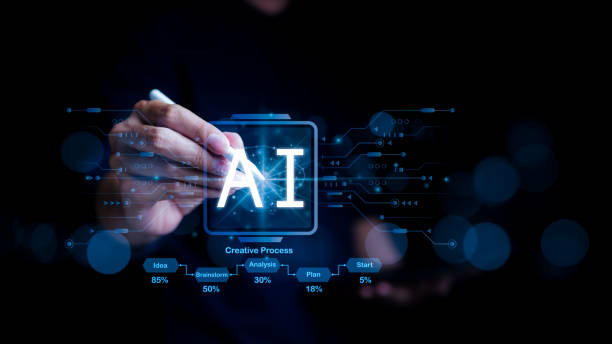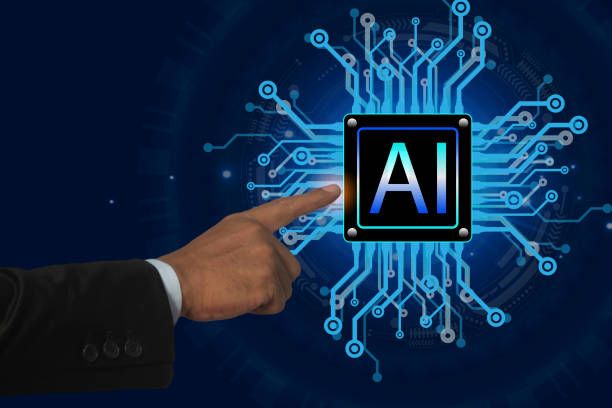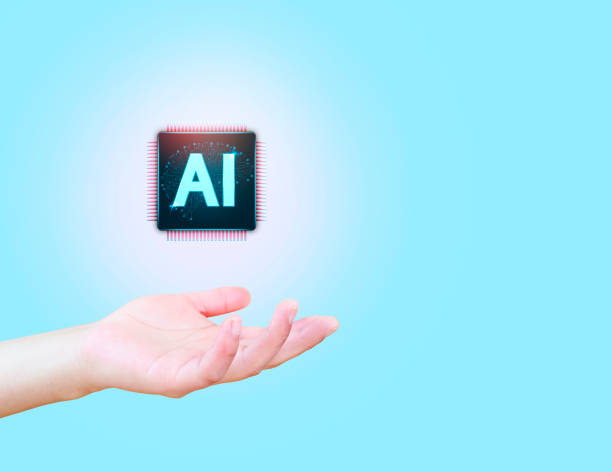Introduction to Artificial Intelligence: Definitions and History
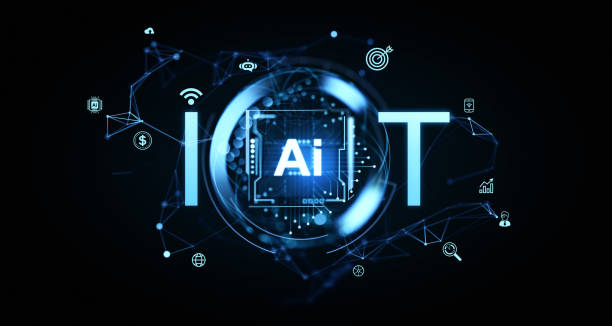
In today’s world, the name #Artificial_Intelligence, as one of the pioneers of #Digital_Transformation and new #Technology, is heard more than ever, transforming our lives in various dimensions.
But what is Artificial Intelligence? Simply put, Artificial Intelligence (AI) is a branch of computer science that deals with the development of machines capable of performing tasks that typically require human intelligence.
These tasks include learning, reasoning, problem-solving, perception, and even language understanding.
The concept of machine intelligence dates back to ancient times, but the scientific roots of modern AI were laid in the 1950s with the pioneering work of individuals such as Alan Turing and John McCarthy.
In 1956, at the Dartmouth Conference, McCarthy officially named this field “Artificial Intelligence.”
Since then, this field has witnessed many ups and downs, from periods of excitement (known as “AI summers”) to periods of stagnation (known as “AI winters”).
However, in recent years, with tremendous advancements in computational power, access to #Big_Data, and innovations in deep learning algorithms, Artificial Intelligence has gained new life and is rapidly conquering new frontiers. These advancements promise a future where our interaction with machines will be smarter and more natural than ever, and this specialized field continues to evolve, with new reports of its incredible capabilities emerging daily.
An explanation of this vital technology helps us better understand its widespread impacts.
Artificial intelligence is no longer a science fiction concept; it is an everyday reality and an indispensable part of the world’s technological infrastructure.
Is your e-commerce site ready to attract maximum customers and increase sales? Rasaweb transforms your online business with modern and efficient e-commerce website designs.
✅ Increased speed and improved SEO
✅ Excellent user experience on mobile and desktop⚡ Get a free e-commerce website design consultation from Rasaweb!
Types of Artificial Intelligence and its Wide Applications
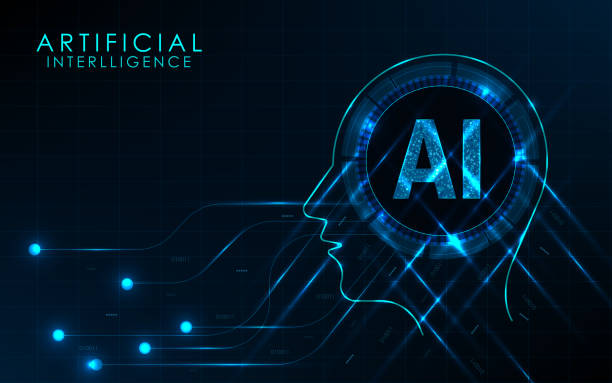
Artificial intelligence today is not just a single concept; it encompasses a wide range of technologies and approaches.
Generally, AI can be divided into three main categories: Narrow AI (or Weak AI), General AI (or Strong AI), and Superintelligence.
Currently, all our real and practical advancements are in the field of Narrow AI.
This type of AI is designed for specific and defined tasks and excels at them, such as facial recognition, language translation, or playing chess.
Voice assistants like Siri and Alexa, Netflix and Amazon recommendation systems, and self-driving cars are all examples of Narrow AI.
In contrast, General AI, which is still in its early stages of research and development, refers to a machine that can perform any intellectual task a human can.
This type of AI will be capable of learning, understanding, and applying knowledge across a wide range of situations.
Superintelligence is a stage where machine intelligence surpasses human intelligence in all aspects, including creativity.
This is a thought-provoking topic regarding the future of humanity.
The applications of AI are vast and diverse.
In healthcare, AI is used for early disease diagnosis, discovering new drugs, and personalizing treatments.
In the financial sector, AI systems help with fraud detection and optimizing investments.
In the automotive industry, the development of self-driving cars and advanced driver-assistance systems is based on AI.
Even in entertainment, AI plays a role in video game creation, music production, and film editing, showcasing the entertaining aspects of this technology.
This explains the widespread penetration of AI into modern life, and every day we hear new reports of its applications.
Technical Foundations of Artificial Intelligence: Machine Learning and Neural Networks
![]()
Understanding how AI works requires a grasp of its technical foundations, especially Machine Learning and Neural Networks.
Machine Learning is a key subset of Artificial Intelligence that allows computers to learn from data without explicit programming.
Instead of writing complex codes for every scenario, we feed data to algorithms, and they discover patterns and relationships.
This process can be supervised (with labeled data), unsupervised (without labels), or reinforcement (through trial and error).
One of the most powerful sub-branches of machine learning is Deep Learning, which is based on Artificial Neural Networks.
These networks are inspired by the structure of the human brain and consist of multiple layers of “neurons” (nodes) that each process information and pass it to subsequent layers.
The depth of these networks allows them to identify much more complex patterns in data, including in image recognition, Natural Language Processing, and even content generation.
Recent advancements in AI are due to significant progress in deep learning, especially with the emergence of architectures like Convolutional Neural Networks (CNNs) for images and Recurrent Neural Networks (RNNs) and Transformers for sequential data.
This specialized technology forms the foundation of many intelligent systems today and serves as a guide for developing the next generation of AI systems.
This specialized field of AI is constantly growing and evolving, with new reports of optimized algorithms and more powerful models emerging every day.
| Feature | Machine Learning | Deep Learning |
|---|---|---|
| Data Dependency | Medium (Can work with less data) | High (Requires a massive amount of data for optimal performance) |
| Model Complexity | Lower (Simpler algorithms) | Higher (Neural networks with multiple layers) |
| Feature Engineering Requirement | Yes (Feature selection and extraction by humans) | No (Automatically extracts features from raw data) |
| Model Power | Lower (For simpler tasks) | Higher (For complex tasks like computer vision) |
| Examples | Linear Regression, Decision Tree, SVM | Image Recognition, Natural Language Processing, Content Generation |
Challenges and Ethical Concerns of Artificial Intelligence

Despite the immense potential of artificial intelligence to improve human lives, this technology also comes with significant challenges and ethical concerns.
One of the most important concerns is Bias in Algorithms.
If the training data we provide to AI contains bias (e.g., reflecting social inequalities or historical discrimination), the AI system will learn and reproduce these biases, which can lead to unfair or discriminatory decisions, particularly in areas like employment, lending, or criminal justice.
This is a thought-provoking issue regarding the accountability of AI developers and users.
Data privacy is another major challenge.
AI systems require vast amounts of data to learn and improve their performance, which often includes individuals’ personal information.
Ensuring the protection of this data and its responsible use is crucial.
The impact of AI on employment is also a serious concern.
While AI can create new jobs and increase efficiency, there is fear that many current jobs, especially repetitive tasks, will be replaced by machines, which requires workforce planning and retraining.
Furthermore, the issue of accountability in AI-induced incidents (such as self-driving car accidents) or AI ethics in sensitive decision-making are other complex and analytical aspects of this field.
The global community is working to formulate laws and ethical frameworks to guide the development and deployment of AI to ensure accountability, transparency, and fairness.
News related to these challenges and solutions to address them forms an important part of the public discourse about the future of artificial intelligence.
Are you tired of your company’s website not getting the visibility it deserves and losing potential customers? Solve this problem forever with professional and effective website design by Rasaweb!
✅ Increase brand credibility and gain customer trust
✅ Attract targeted sales leads⚡ Contact us now for a free consultation!
The Role of Artificial Intelligence in Transforming Various Industries
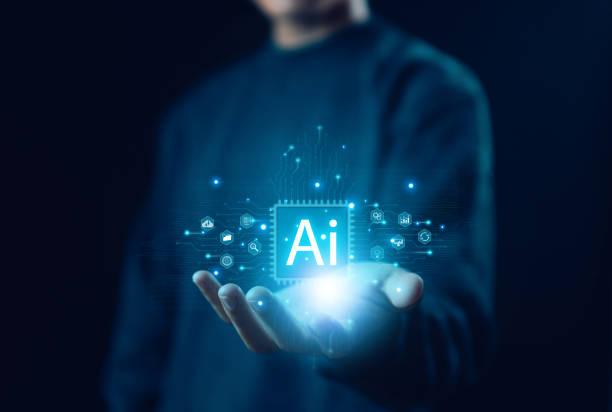
Artificial intelligence is reimagining various industries worldwide, elevating efficiency, innovation, and customer experience to unprecedented levels.
In the manufacturing industry, AI is used for predictive maintenance of equipment, optimizing supply chains, and even product quality control, leading to cost reduction and increased productivity.
In retail, AI systems provide personalized shopping experiences by recommending products based on customer purchase history and preferences.
They also play a vital role in inventory management and demand forecasting.
In the healthcare sector, AI has revolutionized disease diagnosis (such as cancer and diabetic retinopathy) with higher accuracy and speed.
It also assists doctors and researchers in drug discovery and the development of new treatments.
In transportation, self-driving cars and intelligent traffic management systems promise a safer and more efficient future.
These transformations represent a Fourth Industrial Revolution, with artificial intelligence at its core.
In agriculture, AI helps farmers optimize crop yields and reduce resource consumption by analyzing soil, water, and weather data.
In education, AI-powered tools can personalize the learning experience for each student.
This analytical report shows that the penetration of AI into every industry is inevitable, and companies and governments worldwide are investing heavily in this technology to gain a competitive advantage and provide better services.
This is good news for technological advancements.
AI Development in Iran and its Future Outlook
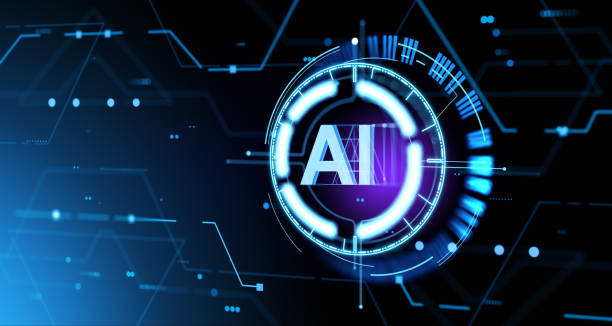
In recent years, the Islamic Republic of Iran has also taken steps toward the development and utilization of artificial intelligence.
Despite challenges related to access to advanced technologies and sanctions, universities, knowledge-based companies, and startups in Iran are actively engaged in various fields of AI.
The main focus in Iran is on Persian Natural Language Processing, Computer Vision, and AI applications in healthcare, agriculture, and finance. Many top universities in the country offer specialized courses in this field, and numerous research projects are underway.
Additionally, companies are developing Persian voice assistants, image recognition systems for various industries, and AI-based analytical tools for businesses.
The future outlook for AI in Iran, given its young talent and high potential for specialized human resources, appears promising.
The government and relevant bodies are also trying to accelerate this process by formulating a national AI document and supporting innovative companies.
However, to achieve a competitive position globally, further investment in infrastructure, access to quality data, and international collaborations for technical knowledge transfer are needed.
Recent news indicates increased attention to this technology and planning for Iran’s position on the global AI map.
AI development in Iran serves as a guide for young people in choosing future careers.
This analytical section provides an overview of the AI status in the country.
Challenges and opportunities in this field are key topics for discussing Iran’s technological future and require a specialized approach to advance goals.
Key Tools and Platforms for Artificial Intelligence
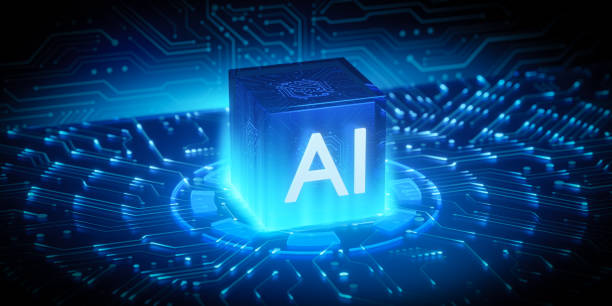
For developing and implementing AI projects, access to suitable tools and platforms is crucial.
These tools include programming languages, frameworks, libraries, and cloud platforms that facilitate the development process.
Python is considered the dominant programming language in this field due to its simplicity, readability, and rich ecosystem of AI libraries.
Among the most important deep learning frameworks are TensorFlow (developed by Google) and PyTorch (developed by Facebook/Meta).
These frameworks provide powerful tools for building and training complex neural networks.
For more classical machine learning tasks, the Scikit-learn library in Python is a popular choice, covering various algorithms such as regression, classification, and clustering.
Additionally, cloud platforms like Google Cloud AI Platform, Amazon SageMaker, and Microsoft Azure Machine Learning provide a comprehensive environment for managing the lifecycle of AI models, from data preparation to deployment and monitoring.
These platforms also provide access to powerful computing resources (such as GPUs and TPUs), which are essential for training large AI models.
The choice of appropriate tools depends on project needs and developer preferences.
This serves as a guide for AI developers and researchers and indicates that this field requires many specialized tools.
News regarding updates and the addition of new features to these tools is always of interest to the AI community.
| Type | Tool/Platform Name | Main Application |
|---|---|---|
| Python Framework | TensorFlow | Developing large-scale deep learning models and production |
| Python Framework | PyTorch | Research, rapid deep learning model development, and prototyping |
| Python Library | Scikit-learn | Comprehensive tools for classic machine learning (regression, classification, clustering) |
| Cloud Service | Google Cloud AI Platform | Suite of AI tools on a cloud platform, including AutoML and ready-made APIs |
| Cloud Service | Amazon SageMaker | Full lifecycle management service for machine learning models, from building to deployment |
| Cloud Service | Microsoft Azure ML | Machine learning platform for building, training, and deploying AI models |
Career Future and the Impact of Artificial Intelligence on the Workforce

One of the central and thought-provoking topics in the discussion of artificial intelligence is its impact on the job market and career future.
AI is not merely going to eliminate jobs but will transform the nature of many of them.
Numerous analyses show that repetitive and rule-based jobs are more susceptible to automation by AI and robotics.
However, jobs requiring creativity, critical thinking, emotional intelligence, and interpersonal skills will be less vulnerable and may even be enhanced. For example, AI can provide tools for doctors, lawyers, teachers, and designers to increase their efficiency and allow them to focus on the more complex and human aspects of their work.
This implies the emergence of new jobs that did not exist before, such as AI engineer, data scientist, AI ethics specialist, and AI model trainer.
To cope with these developments, reskilling and upskilling the workforce are essential.
Training in digital skills, AI literacy, and soft skills like problem-solving and collaboration will be vital for adapting to the future job market.
Governments and companies must invest in training programs so that workers can transition to the new jobs that AI creates.
This analytical section demonstrates that AI is not solely a threat but an opportunity for workforce evolution and the creation of higher value-added jobs, provided that society is prepared for it.
News related to these changes in job structures requires comprehensive guidance and planning so that we can leverage this new wave of technology optimally.
Are you tired of your e-commerce site getting visitors but no sales? Rasaweb solves your core problem with professional e-commerce website design!
✅ Significantly increase sales with targeted design
✅ Flawless user experience for your customers⚡ Get a free consultation now!
Generative Artificial Intelligence and Machine Creativity
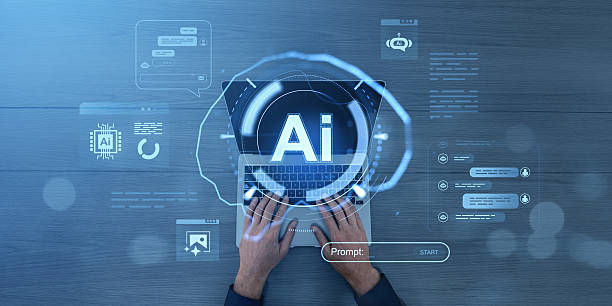
One of the most exciting yet thought-provoking recent advancements in artificial intelligence is the emergence of Generative AI.
This type of AI is capable of producing new, unique, and often highly creative content that did not exist before.
Unlike traditional AI systems designed to analyze or classify existing data, generative models can produce text, images, audio, code, and even video.
Prominent examples of this technology include large language models like ChatGPT, which can generate coherent texts and natural responses, and image generation models such as DALL-E, Midjourney, and Stable Diffusion, which create artistic and realistic images from textual descriptions.
These capabilities raise profound questions about the concept of creativity and the role of humans in artistic processes.
Is AI truly creative, or does it merely combine existing patterns? The answers to these questions are still evolving, and this entertaining yet specialized field has sparked many philosophical and ethical debates.
The applications of generative AI extend beyond art and literature, including assisting developers in writing code, designing new products, and even in scientific research.
This technology can serve as a powerful tool for increasing productivity and innovation, but it requires precise guidance for responsible use and prevention of misuse, such as generating misinformation (Deepfake) is crucial.
News related to the advancements in this branch of AI makes headlines in technology media daily, and this analytical field is rapidly changing.
Generative AI will fundamentally transform the future landscape of humans and machines.
Guide to Starting Learning and Entering the World of Artificial Intelligence
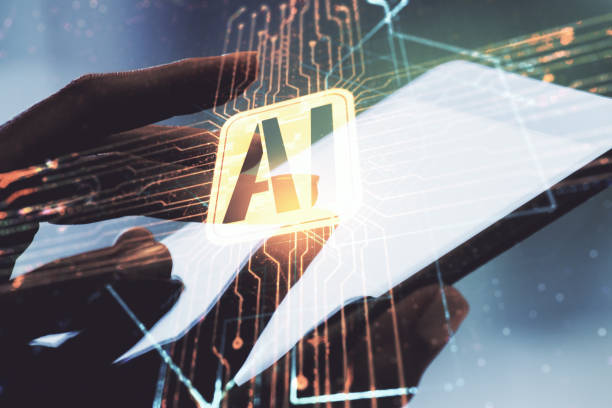
Given the rapid growth and widespread impact of artificial intelligence, many individuals are interested in familiarizing themselves with this field and even entering it.
To begin learning and entering the world of AI, a systematic and educational approach is recommended.
Firstly, programming fundamentals, especially Python, are essential. Numerous online courses are available on platforms like Coursera, edX, and Udemy for Python training and introductions to data science.
After acquiring programming skills, the next step is to become familiar with the mathematical concepts related to AI, including linear algebra, calculus, and statistics and probability.
These foundations help in a deeper understanding of algorithms.
Next, one can proceed to more specialized courses in machine learning and deep learning.
Many reputable universities worldwide offer free or paid courses in these areas.
Practical projects play a vital role in learning.
Try to implement small AI projects yourself or participate in Kaggle competitions to gain practical experience.
Joining online communities and networking with experts in this field can also be very beneficial.
There are also many blogs, podcasts, and YouTube channels that provide specialized educational and news content about AI.
Most importantly, adherence to continuous learning and staying updated with the latest advancements is crucial, as AI is a rapidly evolving field.
This is a comprehensive guide for AI enthusiasts and can be considered a complete educational content.
By following this path, you can gradually become an AI expert and benefit from the countless opportunities in this field.
Artificial intelligence creates new job opportunities that require updated skills to enter.
Frequently Asked Questions
| Question | Answer |
|---|---|
| What is Artificial Intelligence? | It is the simulation of human intelligence in machines programmed to think like humans and imitate their actions. |
| What are the main branches of Artificial Intelligence? | They include Machine Learning, Deep Learning, Natural Language Processing, Computer Vision, and Robotics. |
| What is Machine Learning? | It is a branch of Artificial Intelligence that focuses on enabling systems to learn from data and identify patterns without explicit programming. |
| Mention examples of Artificial Intelligence applications in our daily lives. | Voice assistants (like Siri and Alexa), recommendation systems in Netflix and Amazon, self-driving cars, and facial recognition software. |
| What is Deep Learning? | It is a subset of Machine Learning that uses multi-layered (deep) artificial neural networks to process large amounts of data. |
| What is Natural Language Processing (NLP)? | It is a branch of Artificial Intelligence that focuses on enabling computers to understand, interpret, and generate human language. |
| What are some ethical concerns related to Artificial Intelligence? | They include data bias, privacy, job displacement, and accountability in case of errors. |
| What are the main benefits of Artificial Intelligence? | Increased efficiency, improved decision-making, automation of repetitive tasks, and discovery of complex patterns in data. |
| How is Artificial Intelligence used in healthcare? | In disease diagnosis, drug discovery, medical image analysis, and personalized patient care. |
| How do you see the future of Artificial Intelligence? | It is expected to continue evolving rapidly, impacting all aspects of human life, from industry to education and entertainment. |
And other services of Rasaweb Advertising Agency in the field of advertising:
Smart Conversion Rate Optimization: An innovative platform to improve click-through rates with custom programming.
Smart Social Media: Revolutionize SEO ranking with the help of intelligent data analysis.
Smart Data Analysis: A fast and efficient solution for digital branding focusing on attractive UI design.
Smart Digital Branding: An effective tool for digital branding with the help of attractive UI design.
Smart Social Media: A combination of creativity and technology for online growth by using real data.
And over a hundred other services in internet advertising, advertising consulting, and organizational solutions.
Internet Advertising | Advertising Strategy | Advertorials
Resources
Artificial Intelligence on Digiato
AI News on Tasnim
AI Topics on Hamshahri Online
AI Articles on IT Iran
? Are you ready for your business to shine in the digital world? Rasaweb Afarin Digital Marketing Agency, with an expert and creative team, offers the best comprehensive solutions including custom website design, SEO optimization, and intelligent social media management for your sustainable growth and success.
📍 Tehran, Mirdamad Street, next to Bank Markazi, Southern Kazeroon Alley, Ramin Alley, No. 6

